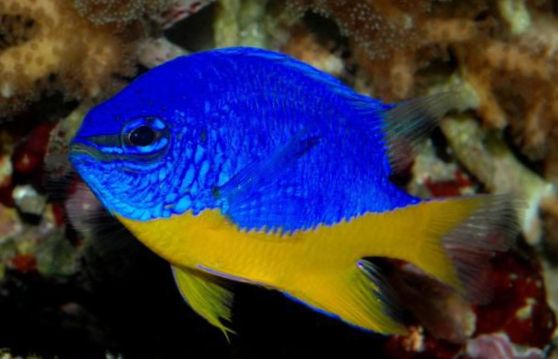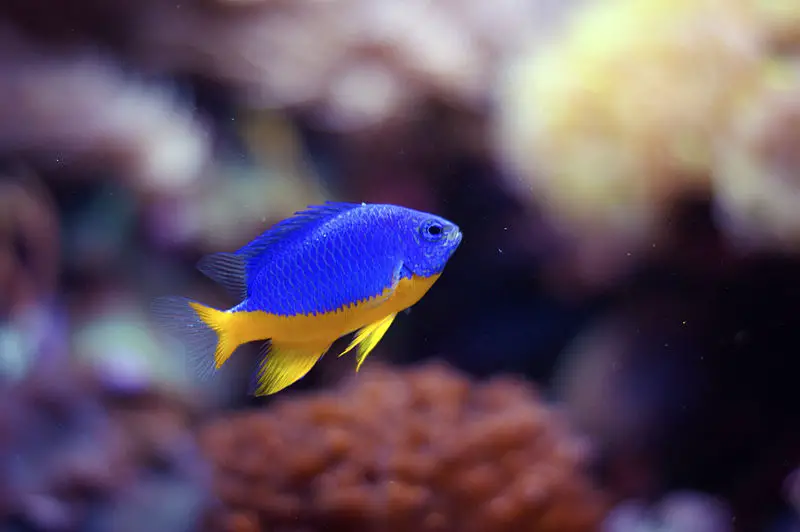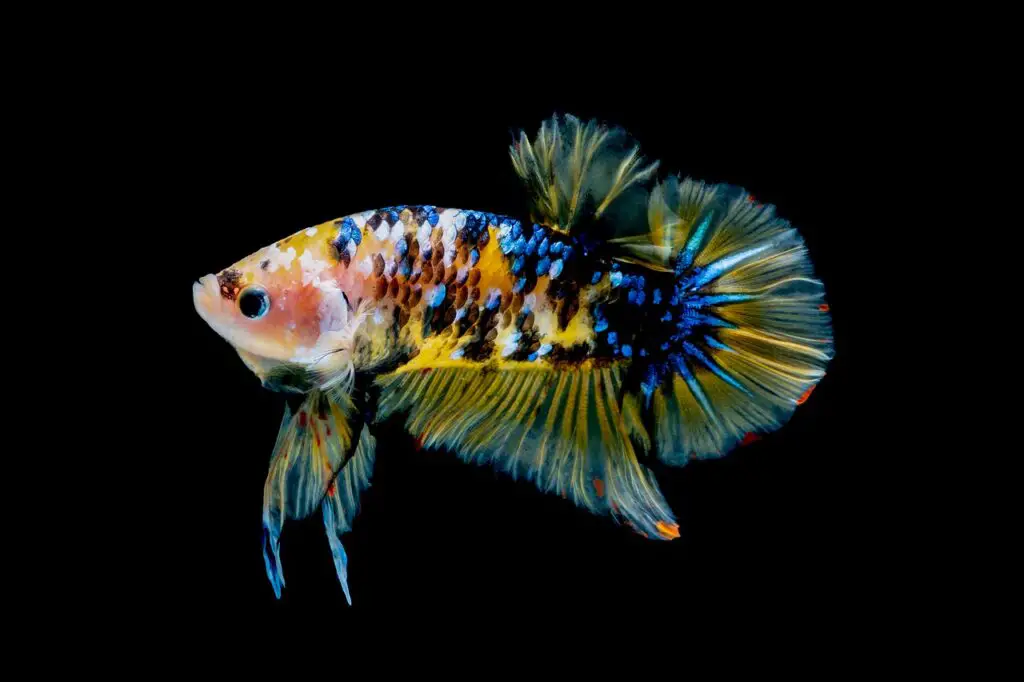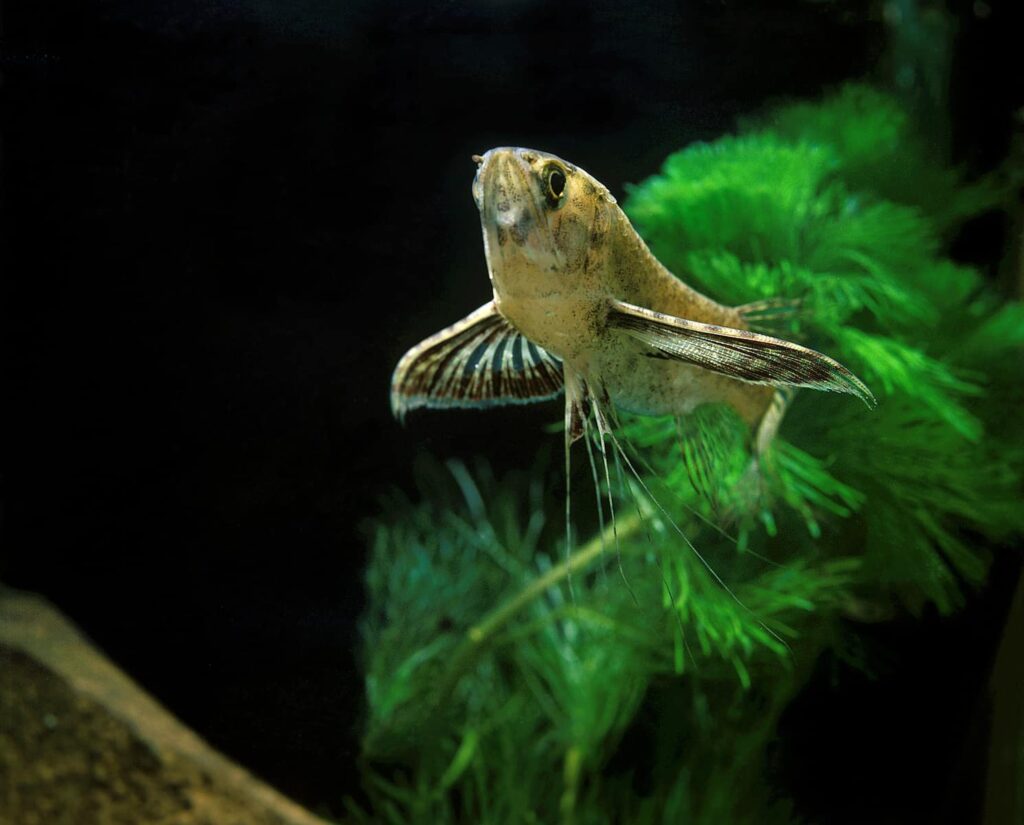Are you considering adopting a damselfish for your saltwater tank? Have you heard about their temperaments but still fancy taking a look at these colorful, rewarding critters? We really cannot blame you! In this guide, we will take a look at everything you need to know about azure damselfish in particular.

Quick Facts:
- Fish Lifespan: Normally Between 4 and 5 Years
- Tank Size: Ideally 30 Gallons
- Water Temperature: Between 75 and 80F
- pH: Between 8.1 and 8.4
- Hardness: Between 8 and 12 dKH
- Compatibility: Compatible with Clownfish, Angelfish and Basslets
- Fish Size: Up to 3 Inches
How do you take care of an azure damselfish?
Azure damselfish are easily some of the most colourful beauties in the saltwater, making them a really popular choice with indoor fish keepers. They are also famously easy to handle, making them a great choice if you have never set up a saltwater tank of your own before. Azures are famously hardy and will therefore often be happy left on their own – providing the tank is of the right standard and that you feed them regularly! They don’t have very demanding tank needs, meaning that providing you are within pH, hardness and temperature ranges they like in the wild, you will be fine.
Damsels can be very aggressive – in fact, they have something of a reputation in the fish keeping community for being little bullies! This tends to run common to most damselfish, however, the azure variety is actually one of the least aggressive. They can be territorial as they get older, but they do not have the same reputation as, for example, the blue devil or domino damsel. They tend to like places to hide, which means you should ideally look for a big tank and offer lots of nooks and crannies for your fish to duck in and out of.
An azure damselfish is likely to add a lot of colour and charm to your tank. As mentioned, they can be a little feisty at times, but the best thing to do to counteract this is to look for fish of a similar temperament and size. However, you should never mix different types of damsel unless you really know what you’re doing! There is a chance that different types of damsel will react badly to one another, meaning it is never a good idea to mix unless you have prior experience.
Overall, however, the azure damsel is a joy to look at and look after. They are omnivores, so make sure to offer them a mixed diet, appealing to their need for meaty pieces as well as fish flakes and herbivore treats.
These fish will normally need a tank of at least 30 gallons even if you only have one or two damsels. However, we would normally encourage you to go beyond this and to introduce a larger tank, where possible, to give your pets as much room as possible. As stated, damsels love to hide and duck around, so play to this need!
Naturally, you should make sure that you don’t put damsels, azures included, in a tank with bigger fish likely to eat them! It might be worth raising them with bigger fish that only eat plants and algae when they are young, so they can mature safely alongside bigger species.
Are damselfish compatible with clownfish?
Yes – to an extent. Clownfish can be territorial too, but as they are often the same size as damsels at their biggest, you will probably find they spar well with azures. That said, there’s nothing to say a damsel won’t feel threatened at any point – it’s just harder for damsels to bully clownfish around.

If you do want to blend clownfish and damselfish together, make a point of looking for common clownfish or percula, and avoid really aggressive damsels such as the blue devil or the domino. Similarly, avoid the maroon clownfish, which is often seen as the biggest and most aggressive of all the species.
There are no real reasons why clownfish and damselfish won’t get on well together. However, you must make sure that you keep a close eye on this mix. Give them all a big enough tank with lots of hiding places, and you hopefully won’t run into any problems.
That said – there’s no guarantee of which fish will mix well with damsels as they are so temperamental. Take a look at advice available online and try to match their energies as best you can.
What is the least aggressive damselfish?
Most damselfish are aggressive by their nature, but azure damselfish likely hold the accolade of being the least irritable.
They are still seen by many as semi-aggressive, so some caution is advised, however, you will normally find that these fish are particularly laid-back compared to your average blue devils.
Damsels are generally small and feisty by design – so you really will have to keep in mind even the most placid of the species are still likely to get twitchy if they feel threatened. Some will even bully smaller fish and may even pick on creatures of their own size.
In our experience, azures make for great starter damselfish because of their relatively good nature – compared to most damsels, anyway. Couple this with the fact they have few tank demands, and you have a great little fish that won’t cause you much hassle.
Where are damselfish located?
Damselfish are reef dwellers, meaning you will normally find them in the ocean wilds of the Pacific and towards Indonesia.
Azure damselfish, in particular, are Indo-Pacific, meaning you’ll find them close to the reefs of Indonesia. They tend to like warmer waters, as you might expect, as well as water that tends to be more alkaline than average.
Many damsels do well in reef tanks, which are warm environments built around coral so that they feel at home in a natural habitat. Azure damsels are reef friendly, so if you already have a saltwater coral tank ready to go, then you’re going to be fine bringing them into the mix.
How big does a damselfish get?
Damselfish of various species tend to grow to be around three or four inches in size. However, many will mature smaller.
That’s why it tends to be a good idea to look for tanks which offer more space than a little. You should ideally look for a tank of at least 30 gallons even if you only have one or two damsels, azures or otherwise.

The rule many fish keepers will tell you is that you should allow for two gallons per inch of fish you want to host in your tank. However, this isn’t always hard and fast, as fish such as damsels will normally thrive in more space in the water, as they will be able to go hide in the deeper, darker areas if they want to.
A cramped tank is never a good idea, regardless of the type of fish you look for! Some saltwater fish such as damsels are going to want to scoot around in the water a lot, meaning you should give them plenty of fin room to do as they please.
Do damsels kill clownfish?
It is very rare that you will find a damselfish actively killing a clownfish. However, as they can be very aggressive, there is unfortunately nothing to say they won’t have the potential to cause harm to other fish. Ultimately, damsels can bully and attack other fish at will.
This means that some fish less aggressive than damsels may suffer from stress or may even face injury. If these injuries persist, this can mean that they develop infections. It’s therefore a very good idea to try and stem the aggressive factor in the tank as much as you possibly can.
Damsels normally won’t start getting very aggressive until they reach adulthood. So, you can intercept a lot of this potential irritability by having them grow up with larger herbivores.
As mentioned, it’s not impossible for damsels to live peacefully alongside clownfish, meaning providing you keep a close eye on your tank, and providing you understand the damsel temperament you should be able to create a happy enough community!
Should I get an azure damselfish?
There are plenty of great reasons why you should adopt an azure damselfish. After all, they are colourful, fun to watch, and are very easy to look after.
Damsels all have territorial instincts and can therefore be a little brusque – perhaps more so if they feel threatened, or if they feel they are in charge of the tank!
However, providing you meet the right tank conditions and feed them well, you can expect to raise these gorgeous fish for many years to come, likely more than five if they are in the right conditions!
Take a look at our other guides to damselfish, too, as they will help you to understand a bit more about these critters and why they need a little more space than most. Why not add some azures to your aquarium?



